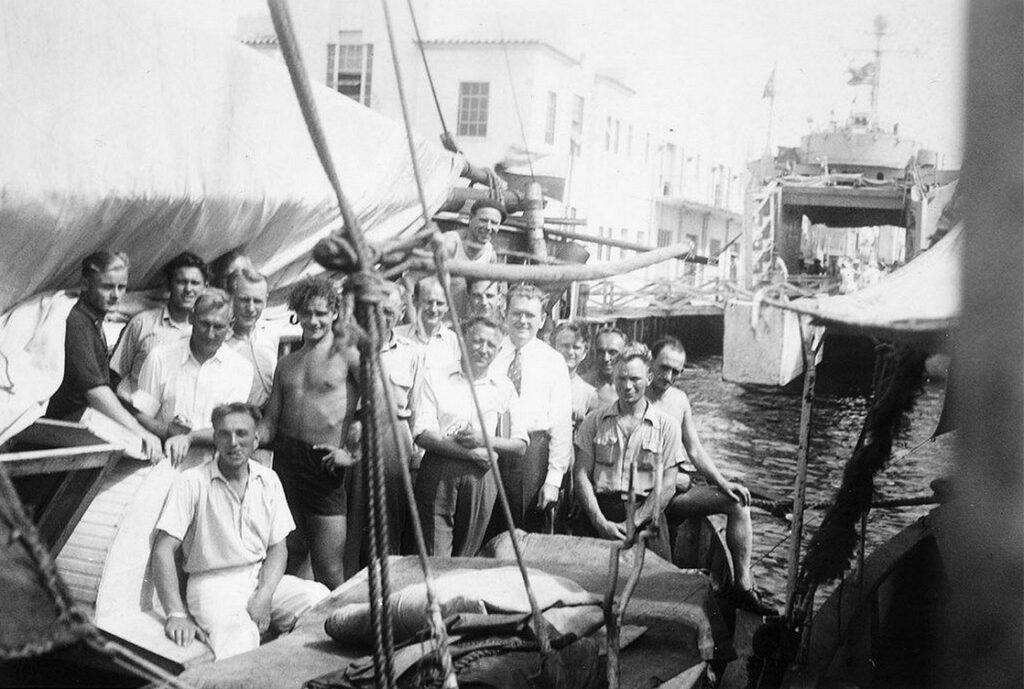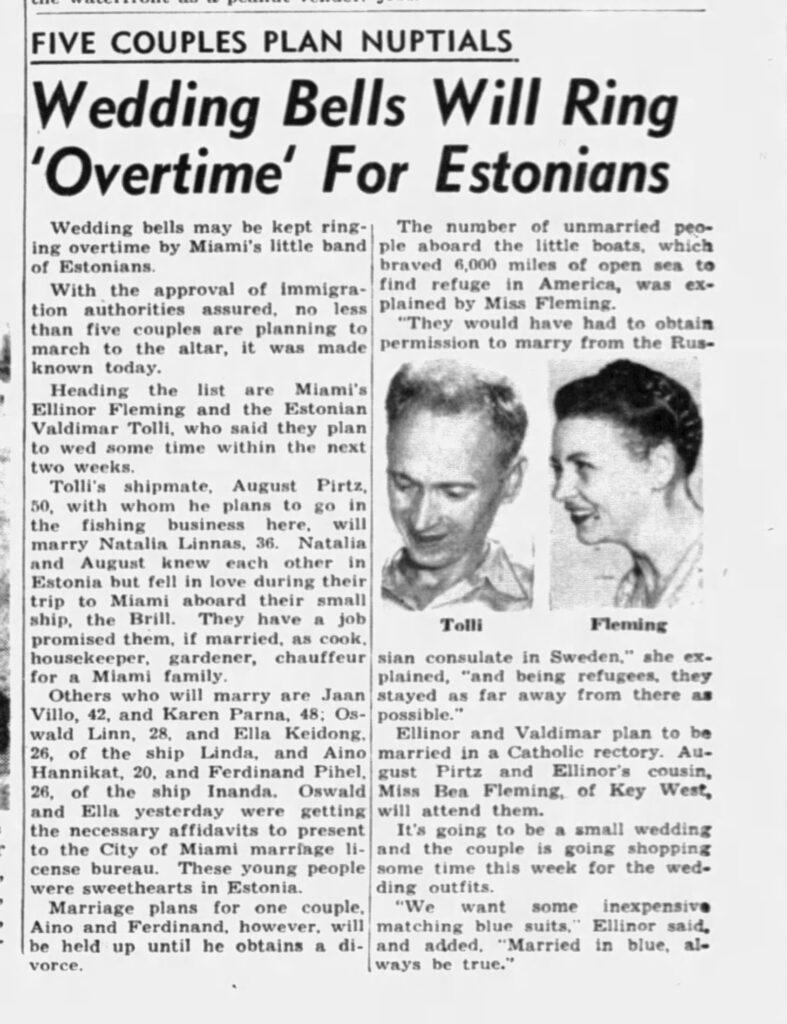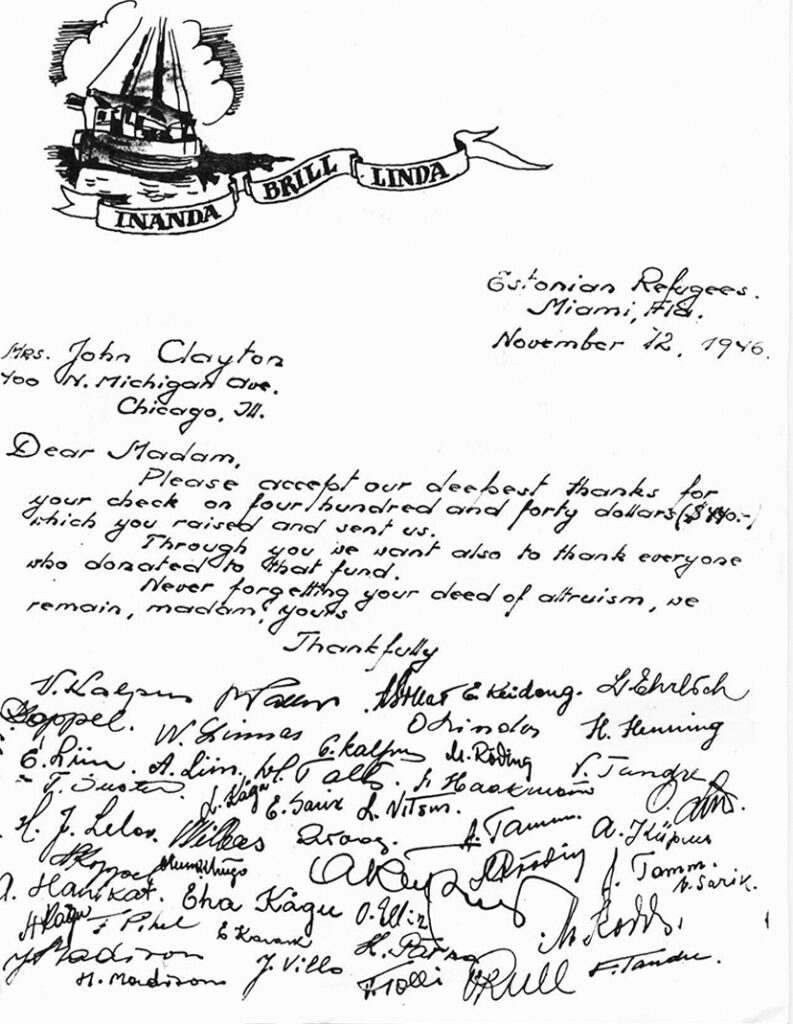Boats

Passengers on the Linda in Miami with Estonian General Consul Ernst Jaakson in center, wearing a tie. Jaakson’s diplomatic career began in independent Estonia. He continued to represent the diplomatic interests of his homeland throughout the long Soviet occupation, becoming Estonia’s ambassador to the United States after independence was regained in 1991.
LINDA
The Linda, under the command of Captain Valter Rull, reached Miami on September 20, 1946, with 18 Estonian refugees on board following a journey of 83 days. One man had broken his back during a storm in the Bay of Biscay but was “feeling all right” when he reached Miami, according to a report in the New York Times.
The refugees’ reception in America
None of the Inanda, Brill, and Linda’s passengers had U.S. visas, but they were not immediately deported and were told if their cases were rejected they would be given time to make the dilapidated boats seaworthy for an onward journey. In response, the refugees said they had no where to go and would rather drown at sea.

Five couples from the three boats tied the knot soon after they arrived in America. Valdimar Tolli met American Ellinor Fleming, a secretary, after he landed on the Brill. The other couples were Estonians who did not want to get married in Sweden because that required permission from the Soviet consulate in Stockholm. Miami News, November 20, 1946
“I want peace, a home, and children,” said Osvald Liin from the Linda. “I’ve been six years without a home, without enough food, and without peace of mind. I can’t stand it anymore.”
Because the boats had arrived at around the same time, authorities treated the 48 Estonians as a single group. With the help of a local Catholic priest, James Loeffler, and a Lutheran minister, William C. Wahl, the refugees wrote many petitions, including to President Harry S. Truman.
After newspapers reported on the difficult and long boat journeys, public support for the refugees grew. On October 25, 1946, the New York Times published an editorial, calling for America to admit “these sturdy, resourceful people who have braved stormy ocean voyages in small boats because they dreamed of America as a safe and friendly haven where man is free.”
In December 1946, the U.S. Supreme Court ruled that the refugees could remain in the United States. To secure U.S. visas, they were required to travel to the Bahamas the following April to obtain official documents that would allow them to become naturalized U.S. citizens.

Thank you note from the passengers of the three boats for a financial donation from a supporter.
To thank their supporters, the refugees produced three leather-bound albums featuring photos of independent Estonia, their escape to Sweden and life as refugees, and their voyage across the Atlantic. The albums were presented to President Truman, King Gustav V of Sweden, and the Rev. James Loeffler. The album in Sweden is preserved at the Royal Bernadotte Library in Stockholm.
Known crew and passengers:
- Captain Valter Rull
- Mikhael Koddu
- Karin Pärna
- Jaan Tamm
- Voldemar Talts
- Brothers Osvald, Alfred, and Ernst Liin (Linna)
- Linda Ehrlich-Liin (Linna)
- Ella Keidong
- Heinard Henning
- Jaan Tamm
- Jaan Villo
- Helmar Rooding and Maria
- Teo Suster and Esther Karask-Suster
- Aleks Haakman
- Otto Ellik
